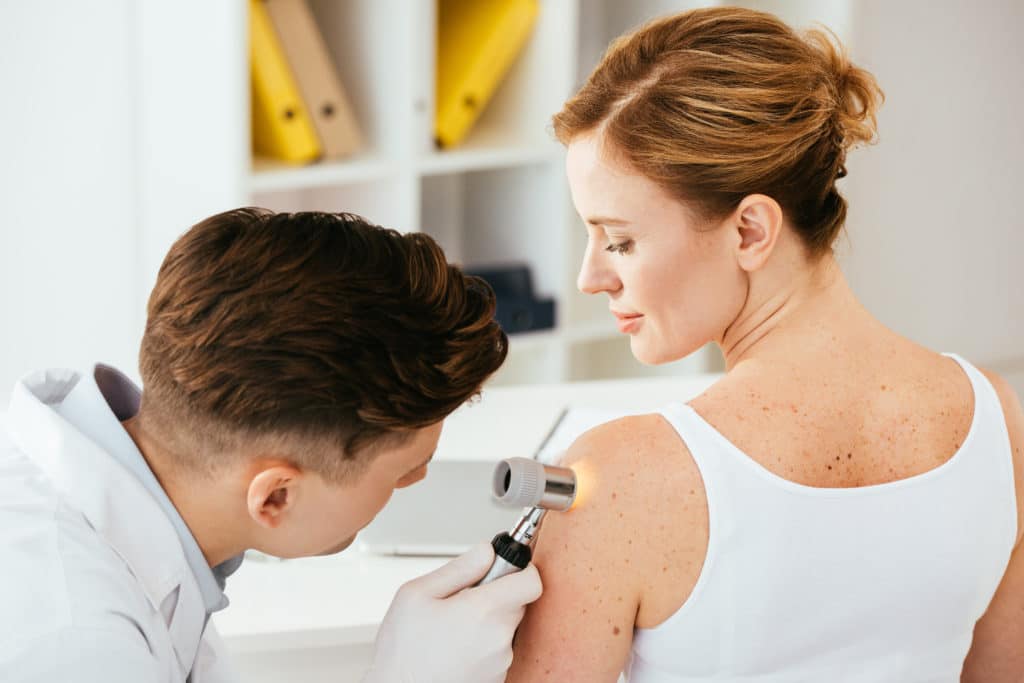Moles and Birthmarks Removal in Tampa & Dade City, FL

What are Moles?
Moles are growths on the skin that are usually brown or black; they may be located, alone or in groups, anywhere on the body. A birthmark is a colored mark that appears soon after a baby's birth.
Although many moles and birthmarks are completely benign and pose no health risk, some people choose to remove them because they consider them unattractive. Regularly using a strong sunscreen, and monitoring birthmarks and moles for changes is highly recommended.
Types of Moles and Birthmarks
There are many types of moles and birthmarks, including the following:
- Congenital mole (dark and irregularly shaped)
- Atypical mole (irregular color and undefined borders)
- Cafe-au-lait spot (light-brown patch)
- Mongolian spot (flat, bluish and irregularly shaped)
- Hemangioma (reddish-purple patch or raised dots)
- Salmon patch (reddish patch, usually on the upper eyelid)
- Port-wine stain (dark red and flat)
Most moles and birthmarks are harmless. However, some atypical moles have the potential to be or become malignant. Atypical moles may be asymmetrical, or have irregular borders and uneven coloring; they can be located anywhere on the body, including areas not exposed to the sun.

Diagnosis of Moles and Birthmarks
A thorough physician-performed examination of the skin is necessary to determine whether a mole or birthmark needs immediate treatment or simply to be checked on a recurring basis. When a mole is diagnosed as atypical, it may need immediate treatment. A patient with an atypical mole may have a personal or family history of melanoma, which increases the possibility of malignancy.
A mole should be examined by a physician if it is:
- Larger than 6 millimeters
- Itching or bleeding
- Rapidly changing color, size or shape
- Multicolored
- Located in a difficult-to-monitor area (such as the scalp)
Most birthmarks are benign, but some have the potential to become malignant or may indicate systemic disease. A large congenital mole that is present at birth has a greater risk of becoming malignant; this is especially true if the mole covers an area larger than the size of a fist. Café au lait spots can indicate a number of rare systemic diseases, such as Maffucci syndrome or Gaucher disease.
Treatment of Moles and Birthmarks
Depending on its depth, location and color, as well as factors that include the patient's skin type and age, treatment for a benign mole or birthmark includes:
- Laser or pulsed-light therapy
- Microdermabrasion
- Surgical removal
If a mole is irregular and needs to be evaluated further, either the entire mole is removed, or a small tissue sample taken, in order to biopsy it. If only a small section of tissue is taken and it is diagnosed as malignant, the entire mole will be removed, along with a margin of normal skin around it. Cutting into a malignant mole will not cause cancer to spread. If the malignancy is caught early enough, this may be the only treatment needed.
A melanoma that has spread beyond the skin requires more aggressive treatment, which may include:
- Surgery to remove affected lymph nodes
- Radiation therapy
- Chemotherapy
- Biological therapy to boost the immune system
- Targeted therapy (attacks vulnerabilities in cancer cells)
Depending on the type and severity of the malignancy, a combination of treatments may be used. Possible, although rare, complications of surgical removal of moles and birthmarks include infection, allergic reaction to the anesthetic used, and nerve damage.

Risks Factors for Malignant Moles
Certain factors may increase the risk of melanoma, including:
- Fair skin
- History of sunburn
- Family history of melanoma
- Excessive UV-radiation exposure from the sun or tanning beds
- Living close to the equator or at higher elevations
- Having several moles or unusually shaped moles
- Weakened immune system
Surgical removal leaves a scar, the severity of which depends on the size, location and type of birthmark, mole or melanoma. Prior to treatment, a patient should be informed about the type and location of a potential scar.
Schedule Your Consultation Today!
Please call 813-877-4811 to schedule an appointment with one of our Florida dermatologists today. Our practice serves Tampa, Dade City & all nearby areas in Florida.
